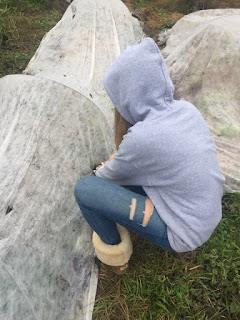This week in sustainable agriculture we learned the process of fermentation. On block day, Wednesday, we all brought in glass jars to do some fermentation of our own. (See photo below) The process mostly consists of adding hard, in season, vegetables, spices such as pickling peppers, sriracha, and crushed chili, and mixing a brine to ratio of 1 tablespoon of salt/1 cup of water. As preparation to this we answered a series of questions to dig deeper chemical fermentation process. Through this we learned what the key bacteria is in the entire pickling process, a bacteria by the name of lactobacilli (Pronounced Lac-toe-back-sil-i). This bacteria thrives in an anaerobic environment and consumes the sugars of the pickling vegetable to survive and multiply. To help with this process we added approximately ½ of a cap of apple cider vinegar. This helps with the breaking down process by adding more lactobacilli before the jar is even sealed. In roughly 5 days we will be able to open our pickling jars and be able to enjoy our various pickled veggies for next week's iron chef. --Kaelin





